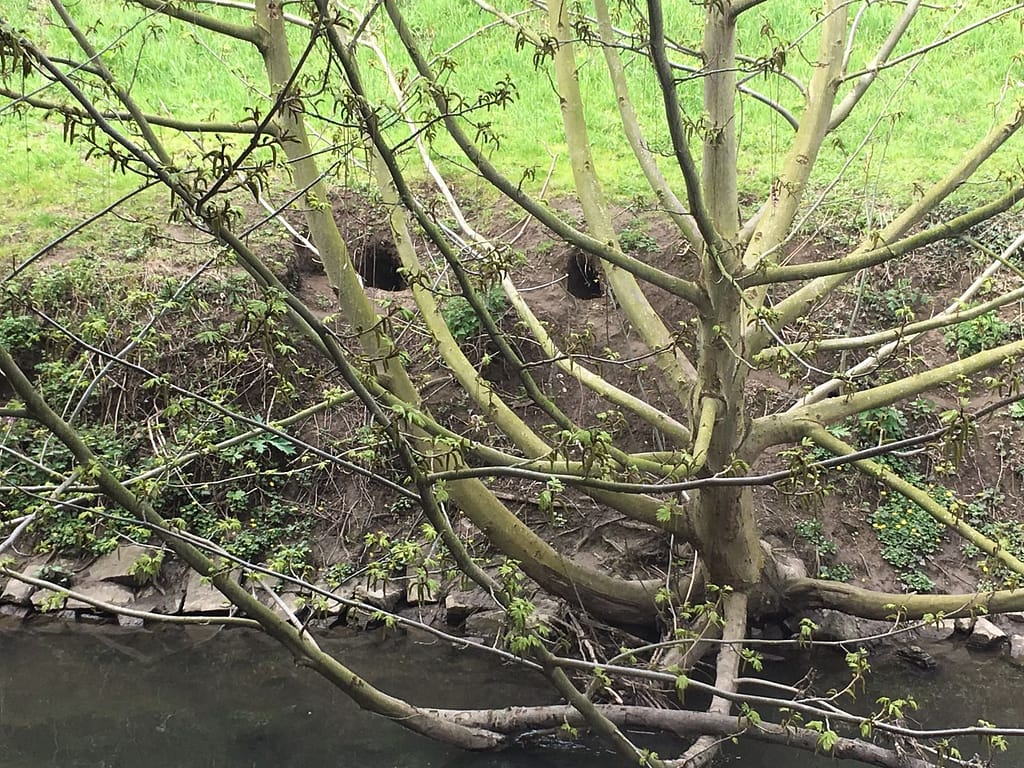A few years ago, Fred Verseijden, employee of Fauna Management Maastricht, stopped using poison on rats. As a result, more enemies of the rat have settled within Tapijn. Foxes, martens, ermines, and eagle owls (the latter do not live within Tapin, but in the ENCI quarry) hunt rats and thus prevent an explosive growth in the number of rats. It is a much more environmentally sound way of dealing with rats.
Latin name:
Rattus norvegicus
Characteristics:
Adult brown rats have a grey-brown coat. The fur on their belly is lighter in colour; light grey to dirty white. Their front legs are also often a bit lighter in colour (see video). Younger rats have a light grey coat. The brown rat has a rather short, pointed snout with long whiskers, small, clearly visible, hairy ears, and dark eyes. The tail is round, almost bald, and always shorter than the body.
Brown rats are sometimes confused with black rats. The most important differences are in the ears and tail. The brown rat has smaller, hairy ears, while the black rat has larger, almost bald ears. The tail of the brown rat is shorter than its body. The tail of the black rat is longer than its body.
The brown rat can squeak, growl, snort, and screech.
The habitat of the brown rat is very diverse, but is determined by the presence of water, shelter, and food. Brown rats are real culture followers and seek shelter in residential areas, especially in winter. In the Netherlands, the brown rat is common almost everywhere, even in areas where no people live. Because it often lives in sewers, the brown rat is also known as a sewer rat.
Notable behaviour:
The brown rat is mainly active at night. However, you will also regularly see brown rats running about during the day, especially in parks. Before rats leave their burrow, they send one rat out to explore the surroundings for about 2 minutes. That rat is called a scout. If the coast is clear, the rest of the group can come out. Because rats are quick to notice changes in their surroundings, they are difficult to catch using, for example, a rat trap.
Reproduction:
Rats live in colonies with a dominant male, a harem of females, and a number of subordinate males. If you are a bigwig, you are allowed to reproduce and be the first to eat. If you are at the bottom of the hierarchy of dominance, you can forget it. Rats defend their colony’s territory fiercely against rats from other colonies.
Rats are known for their rapid reproduction, which continues all year round, depending on food availability. March and September/October show a peak in reproduction. One rat can have three to five litters per year, with 1 to 15 young each. The gestation period is 20 to 23 days.
The young are born blind and naked, but after 7 to 10 days their eyes open and they are covered in hair. When the young are three weeks old, the mother stops suckling, and after about three to four months, the young can reproduce
Diet:
It is not surprising that brown rats are omnivores. They eat mainly grain, seeds, snails, larvae, frogs, young mammals, birds’ eggs, mussels, amphibians, bait, and waste. The latter is an important source of food for city rats. Lactating females and non-dominant males, in particular, often take food to a hiding place or build up a food supply.
Cannibalism also occurs in brown rats, but only in cases of food shortages, especially protein shortages.
